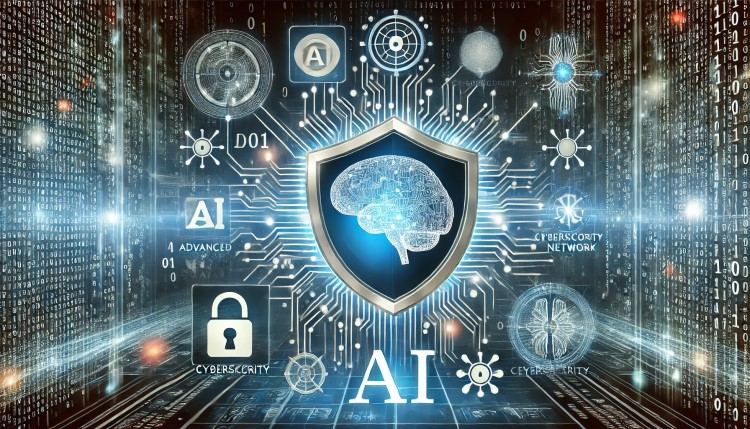In the digital age, the importance of data protection cannot be overstated. As cyber threats become more sophisticated, traditional security measures are often insufficient. The integration of AI and cybersecurity is revolutionizing how organizations protect their data. By leveraging artificial intelligence, businesses can enhance their security protocols and stay ahead of emerging threats. Here’s how AI and cybersecurity are working together to provide robust data protection.
The Role of AI in Cybersecurity
Artificial intelligence plays a crucial role in modern cybersecurity strategies. One of the primary benefits of AI in cybersecurity is its ability to analyze vast amounts of data quickly. Traditional security systems struggle to keep up with the sheer volume of data generated daily. However, AI algorithms can process and analyze this data in real-time, identifying patterns and anomalies that may indicate a cyber threat.
Furthermore, AI enhances threat detection and response times. Machine learning models can be trained to recognize various types of cyber attacks, including malware, phishing, and ransomware. By continuously learning from new data, these models become more accurate over time. Consequently, AI-powered systems can detect threats faster and more accurately than traditional methods.
Proactive Threat Detection
One of the significant advantages of integrating AI and cybersecurity is proactive threat detection. Unlike traditional security measures that often rely on reactive approaches, AI can predict and prevent cyber attacks before they occur. Predictive analytics, powered by AI, analyze historical data to identify potential vulnerabilities and threat vectors.
Moreover, AI systems can simulate cyber attacks to test the robustness of security protocols. These simulations help organizations identify weaknesses in their defenses and implement necessary improvements. By proactively addressing vulnerabilities, businesses can reduce the risk of successful cyber attacks and enhance their overall security posture.
Automated Incident Response
In addition to proactive threat detection, AI and cybersecurity also enable automated incident response. When a security breach occurs, rapid response is critical to minimize damage. AI-powered systems can automatically initiate response protocols, such as isolating affected systems, alerting security teams, and mitigating the threat.
Automation significantly reduces the time it takes to respond to a cyber attack. This quick response is crucial in preventing the spread of malware and minimizing data loss. Additionally, automated incident response frees up valuable time for cybersecurity professionals, allowing them to focus on more complex tasks and strategic planning.
Enhancing User Authentication
User authentication is another area where AI and cybersecurity intersect. Traditional authentication methods, such as passwords, are often vulnerable to attacks. AI enhances authentication by incorporating advanced techniques like biometrics, behavioral analysis, and multi-factor authentication.
Biometric authentication, including fingerprint and facial recognition, provides a higher level of security compared to passwords. AI algorithms analyze unique physical characteristics, making it difficult for unauthorized users to gain access. Behavioral analysis further strengthens authentication by monitoring user behavior and detecting anomalies that may indicate unauthorized access.
Securing IoT Devices
The proliferation of Internet of Things (IoT) devices presents new challenges for cybersecurity. These devices often have limited security features, making them attractive targets for cybercriminals. AI and cybersecurity work together to address these vulnerabilities and secure IoT networks.
AI can monitor IoT devices for unusual activity, identify potential threats, and automatically respond to attacks. By leveraging AI, organizations can protect their IoT infrastructure and ensure the integrity of their data. Additionally, AI-powered systems can manage large networks of IoT devices, providing centralized security management and real-time threat detection.
Reducing False Positives
One of the challenges in cybersecurity is the occurrence of false positives. Traditional security systems often generate numerous false alarms, overwhelming security teams and diverting attention from genuine threats. AI and cybersecurity can significantly reduce false positives by using advanced algorithms to accurately differentiate between real threats and benign activity.
Machine learning models analyze historical data to understand normal behavior patterns. This analysis allows AI systems to recognize legitimate activity and avoid flagging it as suspicious. As a result, security teams can focus on actual threats, improving efficiency and effectiveness in protecting organizational data.
Adapting to Evolving Threats
Cyber threats are constantly evolving, with new attack vectors and techniques emerging regularly. AI and cybersecurity provide the adaptability needed to stay ahead of these evolving threats. Unlike traditional security measures that require manual updates, AI systems can automatically learn from new data and adjust their defenses accordingly.
Continuous learning and adaptation are key features of AI in cybersecurity. As cybercriminals develop new methods, AI algorithms evolve to counteract these threats. This dynamic approach ensures that security measures remain effective, even as the threat landscape changes.
Enhancing Data Privacy
Data privacy is a critical aspect of cybersecurity. Organizations must ensure that sensitive information is protected from unauthorized access and breaches. AI and cybersecurity enhance data privacy by implementing advanced encryption, access controls, and data anonymization techniques.
AI algorithms can encrypt data in transit and at rest, ensuring that even if data is intercepted, it remains unreadable. Access controls, powered by AI, enforce strict permissions, allowing only authorized users to access sensitive information. Additionally, data anonymization techniques protect individual privacy by removing personally identifiable information from datasets.
The integration of AI and cybersecurity is transforming the way organizations protect their data. From proactive threat detection to automated incident response, AI enhances every aspect of cybersecurity. By leveraging AI, businesses can stay ahead of emerging threats, reduce false positives, and ensure data privacy. Understanding the synergy between AI and cybersecurity is essential for organizations aiming to build robust, adaptive, and resilient security frameworks. As cyber threats continue to evolve, the role of AI in cybersecurity will only become more significant, providing advanced tools and techniques to safeguard critical data.


